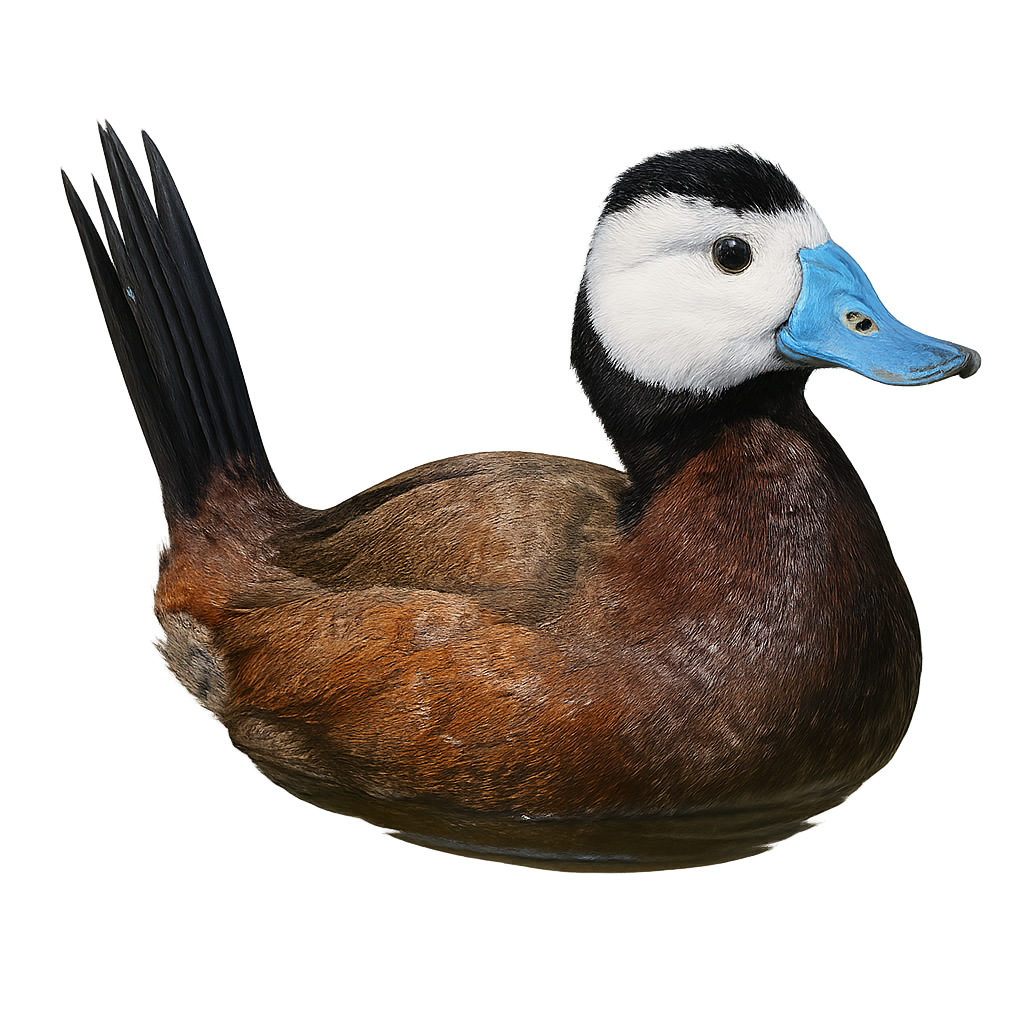Your wildlife photography guide.
Explore the white-headed duck in detail, study its behavior, prepare your shots.
Where to observe and photograph the white-headed duck in the wild
Learn where and when to spot the white-headed duck in the wild, how to identify the species based on distinctive features, and what natural environments it inhabits. The WildlifePhotographer app offers tailored photography tips that reflect the white-headed duck’s behavior, helping you capture better wildlife images. Explore the full species profile for key information including description, habitat, active periods, and approach techniques.
White-headed duck
Scientific name: Oxyura leucocephala

IUCN Status: Endangered
Family: ANATIDAE
Group: Birds
Sensitivity to human approach: Very shy
Minimum approach distance: 20 m
Courtship display: April to June
Incubation: 25-27 jours
Hatchings: May to July
Habitat:
Freshwater lakes and ponds with dense emergent vegetation
Activity period :
Primarily active during the day, with peak activity in the morning and late afternoon.
Identification and description:
The white-headed duck is a small diving duck, 40–45 cm long, with males displaying a white head, slate-grey body and bright blue bill, while females have a brownish head and darker bill. It inhabits freshwater lakes and ponds fringed by dense emergent vegetation, diving to feed mainly on aquatic plants and small invertebrates. Shy and solitary, it typically swims away under water when threatened rather than flying.
Recommended lens:
300 mm – adjust based on distance, desired framing (portrait or habitat), and approach conditions.
Photography tips:
Photograph the white-headed duck from a distance using a telephoto lens of ≥300 mm at sunrise or sunset from a concealed hide at the edge of emergent vegetation. Use a fast shutter speed to freeze its dives and a shallow depth of field to isolate the white head and grey body against the background. Remain silent and still to avoid disturbance.
The WildlifePhotographer App is coming soon!
Be the first to explore the best nature spots, track rutting seasons, log your observations, and observe more wildlife.
Already 1 430 wildlife lovers subscribed worldwide

